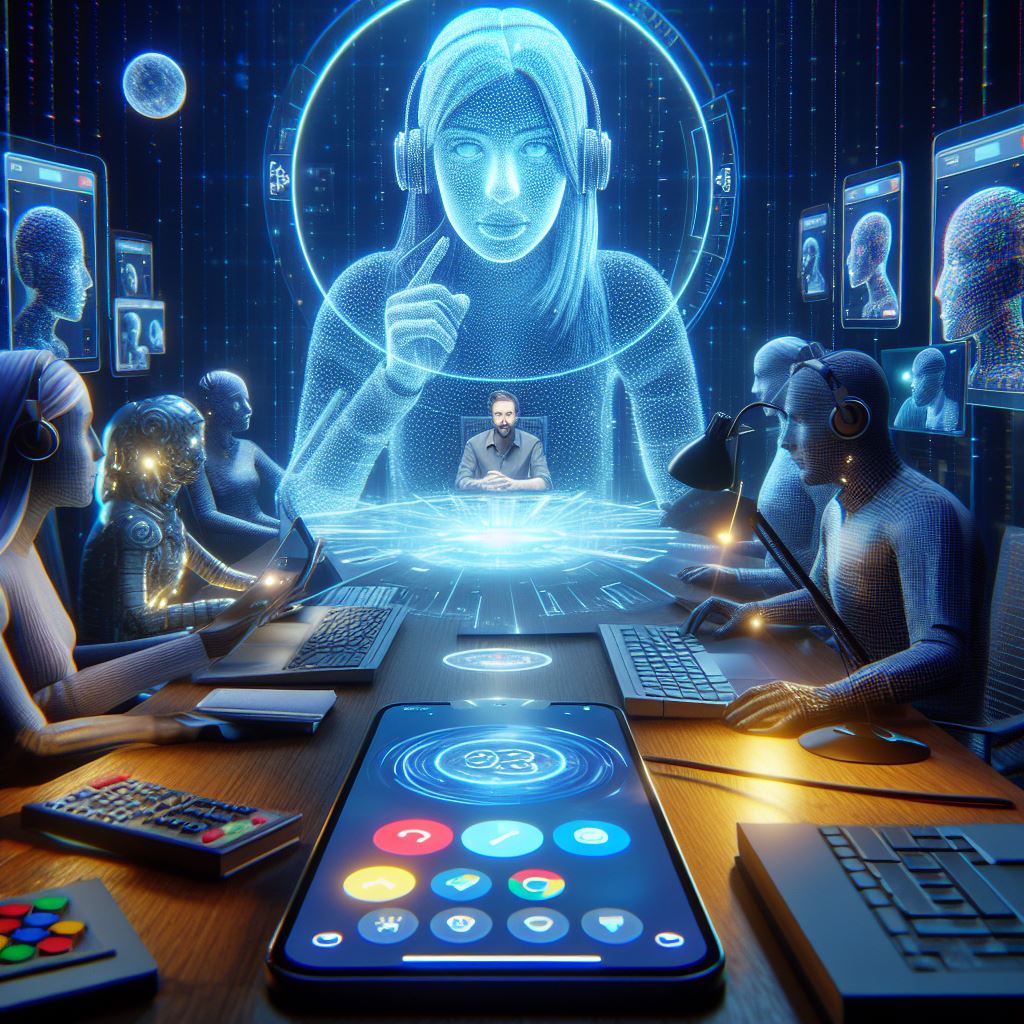
Google’s Project Starline represents a groundbreaking leap in video calling technology, delivering an experience that closely mimics in-person interactions. This innovative system was demonstrated at Google I/O in Mountain View, California, showcasing its potential to revolutionize virtual communication.

Project Starline creates an almost holographic experience. Users can sit in front of a large screen and see a 3D rendering of another person as if they were sitting across from them. When Andrew Nartker, the general manager of Project Starline, extended his arm or held out an apple, it appeared as though these actions were happening in real life. The most striking feature is the sensation of making direct eye contact, which is both astonishing and slightly surreal.
This technology relies on seven cameras positioned around the displays, capturing video from multiple angles. These videos are then processed by an AI model to reconstruct 2D footage into 3D images. A specialized flat display, known as a light field display, shows these 3D images with accurate scale, shadows, and lighting, making the interaction feel incredibly realistic.
Introduced in 2021, Project Starline aims to make virtual meetings more personal and engaging, whether they are with friends, family, colleagues, or healthcare providers. Recently, Google announced a partnership with HP to commercialize this technology, with plans to introduce it to workplaces next year.
What distinguishes Project Starline is its ability to deliver high-quality, lag-free video streams. This reduces the awkwardness of typical video calls, where interruptions and delays often hinder conversation flow. Users can engage more naturally, perceiving and conveying body language and nonverbal cues more effectively. This makes interactions feel more holistic and lifelike compared to traditional video calls.
A study by Google highlighted that participants using Project Starline were more animated, using more hand gestures, head nods, and eyebrow movements. They also reported a better ability to understand and communicate nonverbal cues. This could make virtual meetings more meaningful and reduce the need for in-person meetings for activities like job interviews or performance reviews.
Additionally, users experienced less video fatigue and were more attentive, partly due to the immersive nature of the display, which captures and holds attention better than conventional screens. However, it remains to be seen whether this level of engagement will persist over time or if users will eventually find themselves distracted by other devices.
As Google prepares to expand this technology, the question remains whether others will be as impressed by Project Starline’s capabilities. For now, this advancement signifies a significant step towards making virtual interactions as impactful as face-to-face meetings. While video calls are becoming increasingly sophisticated, there is still something irreplaceable about real-life human connection.

